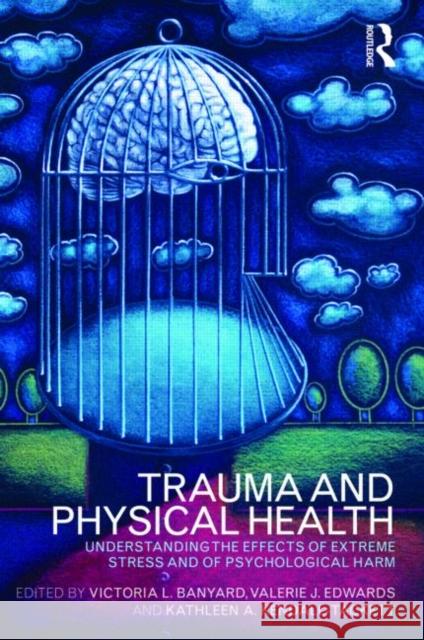Trauma and Physical Health: Understanding the Effects of Extreme Stress and of Psychological Harm » książka
Trauma and Physical Health: Understanding the Effects of Extreme Stress and of Psychological Harm
ISBN-13: 9780415480796 / Angielski / Miękka / 2009 / 258 str.
Trauma and Physical Health: Understanding the Effects of Extreme Stress and of Psychological Harm
ISBN-13: 9780415480796 / Angielski / Miękka / 2009 / 258 str.
(netto: 195,06 VAT: 5%)
Najniższa cena z 30 dni: 201,44
ok. 22 dni roboczych.
Darmowa dostawa!
Trauma research and clinical practice have taught us much about the widespread problems of child maltreatment, partner violence, and sexual assault. Numerous investigations have documented links between such trauma exposure and long-term negative mental health consequences. As we learn more about traumatic stress, however, increasing attention has been drawn to the less studied physical health effects of maltreatment and trauma. Trauma and Physical Health describes both the negative physical health effects of victimization in childhood as well as exploring theoretical models that explains these links. By bringing together new and current studies on the relationship between trauma and physical health, this edited collection assesses the clinical implications of these links. At a time when the mental health field is becoming increasingly cognizant of the value of collaboration with professionals in the physical health arena, this book suggests ways in which clinicians can work with primary care professionals to better meet the needs of trauma survivors across the lifespan. A key focus of the text is to clarify the relationship between the current knowledge base in trauma and physical health and directions for future research in primary care health settings. With contributors from a wide range of clinical and psychological disciplines, it will be of interest to researchers, clinicians and professionals in the trauma field and to primary care professionals concerned with compassionate care for the traumatized.
Trauma research and clinical practice have taught us much about the widespread problems of child maltreatment, partner violence, and sexual assault. Numerous investigations have documented links between such trauma exposure and long-term negative mental health consequences. As we learn more about the psychobiology of traumatic stress, however, increasing attention has been drawn to the previously overlooked physical health effects of maltreatment and trauma.
This book describes the negative physical health effects of victimization and provides a model that explains these links. By bringing together current studies on the relationship between trauma and physical health, the authors are able to assess the clinical implications of these links. This book suggests ways in which clinicians with expertise in trauma treatment may partner in important ways with primary care professionals to better meet the needs of trauma survivors across the lifespan. This comes at a time when the mental health field is increasingly exploring the value of collaboration with professionals in the physical health arena.
A key focus of the text is to make clear the relationship between both what the field currently knows about trauma and physical health, and directions for future research as they can be applied to work within primary care health settings. The chapters ground us in a review of what is known while then asking the next set of questions and discussing real-world implications that the answers may hold. It will be of interest to researchers, clinicians and associated health professionals.











